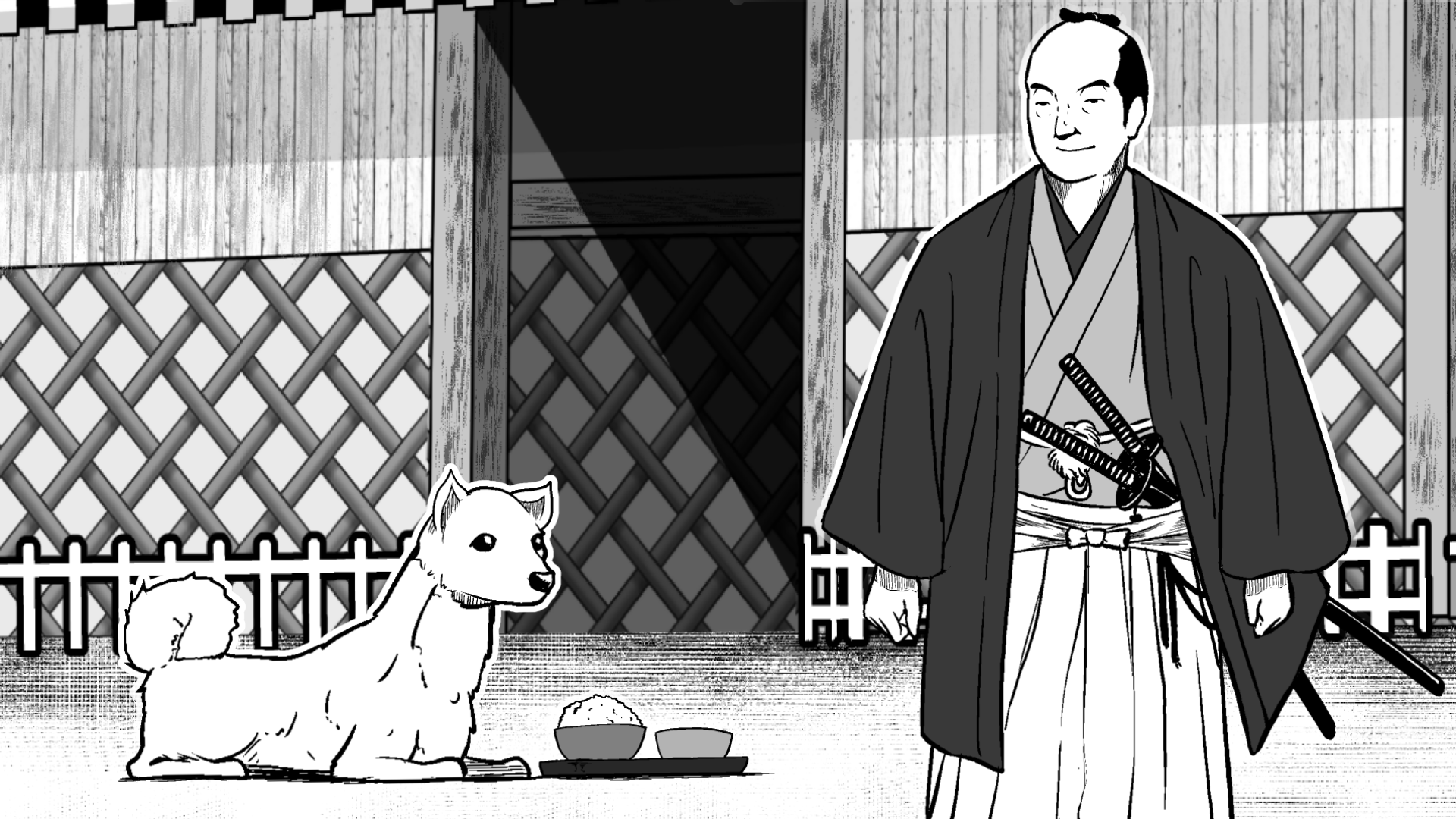The Site of the Residence for the Tokugawa Clan’s Dogs, Nakano City Office, Nakano ward
Ten Thousand Dogs
What is the worlds first "animal law" set by the 5th shogun?

(Voice actor) Mr.David Radtke

Tsunayoshi Tokugawa, the fifth shogun of the Tokugawa regime was famous for being studious. Tsunayoshi became the shogun at a time when a new type of samurai, one who could respond to the new world order was desired rather than samurai of physical strength, like during the Warring States period that had ended. That was why Tsunayoshi encouraged samurai to be educated. He established Yushima Seido temple to teach academic skills. He was also the one who spread Confucianism. Society was stable because of Tsunayoshi, and the Genroku culture flourished under the Tokugawa administration. One of Tsunayoshis works was the “ordinances of animal protection” that taught the importance of life to many people. However, these ordinances were what gave Tsunayoshi a bad name. When they were first enacted in 1695, they more or less suggested to “be kind to animals,” but these ordinances gradually escalated with time. One famous story is that Tsunayoshi did not have a boy child as his heir, so he received a prayer and was given an annunciation that he would be blessed with children if he embraced animals. And they decided to cherish dogs especially since Tsunayoshi was born in the year of the dog. Speaking of dogs, there were a lot of stray dogs in the town of Edo. There was a saying, “Iseya, Inari and dog manure,” to describe the things abundant in Edo. Iseya which was a common name for shops (*many were confectioneries) and Inari Shrines (for worship of the god of business, popular among merchants) were everywhere and so was dog feces because of the number of stray dogs. The Tokugawa administration protected those stray dogs from their perspective on animal rights. The protected dogs were detained in an official residence in Nakano. It was supposedly a Tokugawa administration building but used actually for housing dogs. There were one hundred thousand dogs there, they say. The size of the settlement was three hundred and thirty thousand square meters that included the Central Park and ward office of present day Nakano. Naturally, tax money was used to support these dogs. The commoners who were struggling to pay taxes were not happy that the money was spent on dogs and not for people. This might already seem to have gone too far. Some mocked the situation by calling dogs “oinu-sama” (*dog master). Find out in this story how the ordinances of animal protection influenced the people of Edo.
"100 hidden stories of Tokyo" Application Download
Caution
This app contains in-app purchases.
Please note that packet data fees will be charged separately.



